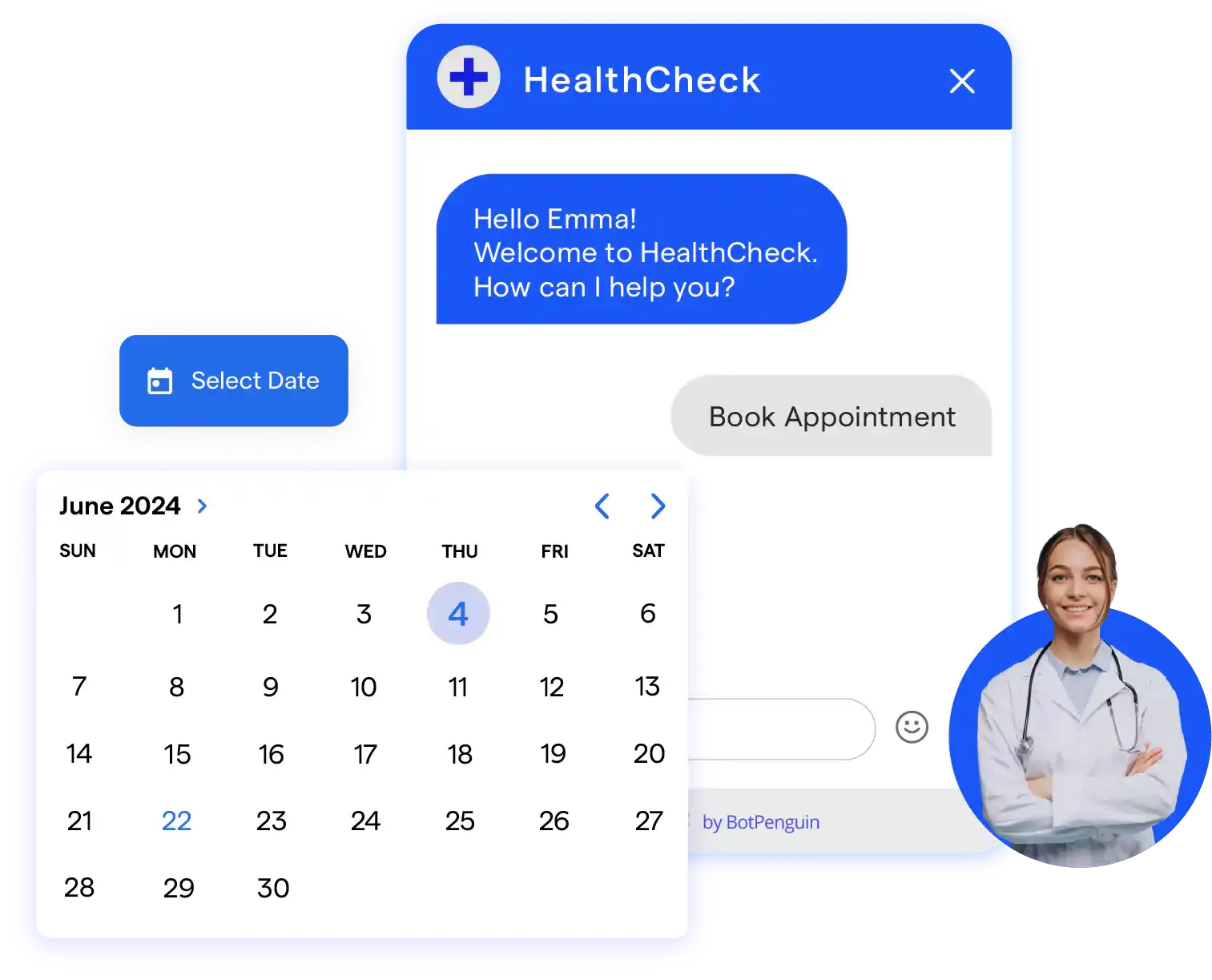Introduction
In today's online healthcare landscape, patient engagement stands as a cornerstone for efficient healthcare delivery.
Healthcare practitioners are looking for novel methods to improve patient experiences. And guess who is stealing the show? Chatbots!
Yes, chabots specifically made for healthcare with natural language processing and machine learning algorithms. It leverages AI and offers a dynamic solution to boost patient engagement.
Healthcare chatbot solutions represent a paradigm shift in patient-provider interactions. As it offers unprecedented accessibility, convenience, and personalized support.
These AI-powered chatbots are programmed to simulate human conversation. And providing users with instant responses to inquiries, assistance with appointment scheduling, medication reminders, health education, and even symptom assessment.
Moreover, chatbots facilitate real-time communication, enabling swift intervention in emergencies and timely provision of medical advice,
The benefits of incorporating chatbots in healthcare are manifold, especially in boosting patient engagement.
So continue reading to know more about healthcare chatbot and patient engagement.
What is a Chatbot in Healthcare?
A healthcare chatbot functions similarly to a digital health companion, capable of conversing with patients, answering their questions, and even aiding with medical duties.
These artificial intelligence-powered assistants may give information on symptoms, drugs, and treatment alternatives, making them essential tools for both patients and healthcare providers.
Types of Chatbots Used in Healthcare
Rule-based chatbots and AI-powered chatbots are the two main types of chatbots utilized in healthcare settings, like:
- Rule-based chatbots can give simple solutions to frequent queries and adhere to a preset set of rules.
- Conversely, chatbots that are powered by AI can comprehend and reply to more sophisticated questions thanks to machine learning algorithms.
Why is Patient Engagement Important?
Understanding patient involvement is a very important factor. In addition to following a doctor's advice, interaction also entails the patient feeling in charge of and control of their health. Patients who participate are more likely to follow treatment plans, attend appointments, and have meaningful conversations with their healthcare providers.
Enhancing patient engagement benefits the patient directly and also improves the bar for healthcare as a whole. Engaged patients frequently accurately characterize their symptoms, resulting in a more precise diagnosis and course of therapy.
Patients can also lessen their risk of expensive medical errors and feared readmissions to the hospital by actively participating in their care. The word "patient engagement" is not only for show.
Benefits of Using Chatbots in Patient Engagement
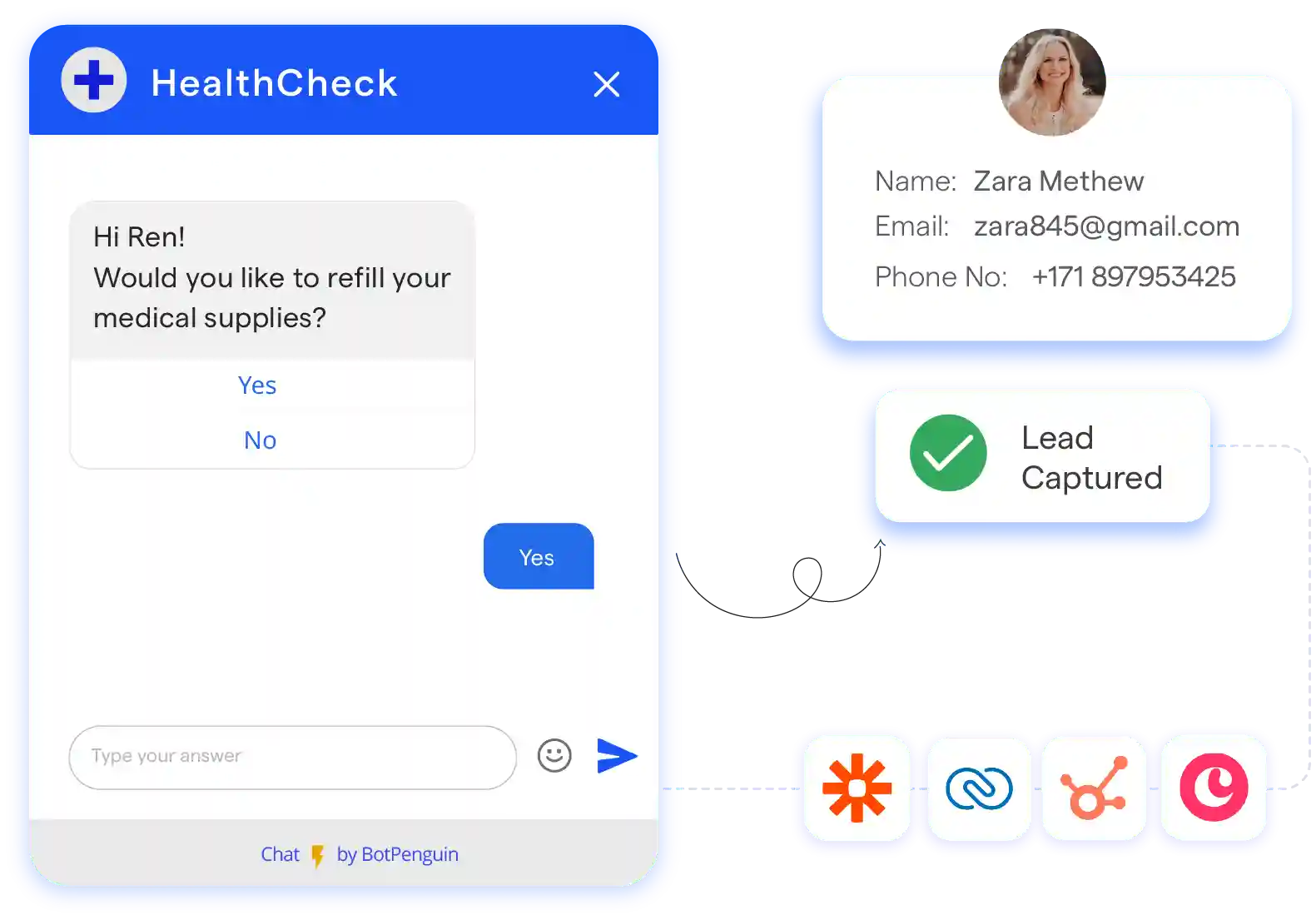
When it comes to patient involvement, chatbots provide several advantages, like:
24/7 Availability
Chatbots provide round-the-clock support throughout the year. It allows patients to access information and assistance at any time, enhancing convenience and accessibility.
Immediate Responses
With instant responses to queries, chatbots reduce wait times for patients. It also ensures timely access to information and support, which can be crucial in medical emergencies.
Personalized Interaction
Through advanced algorithms, chatbots can offer personalized interactions, tailoring responses to individual patient needs and preferences. Doing this would enhance engagement and satisfaction.
Appointment Scheduling
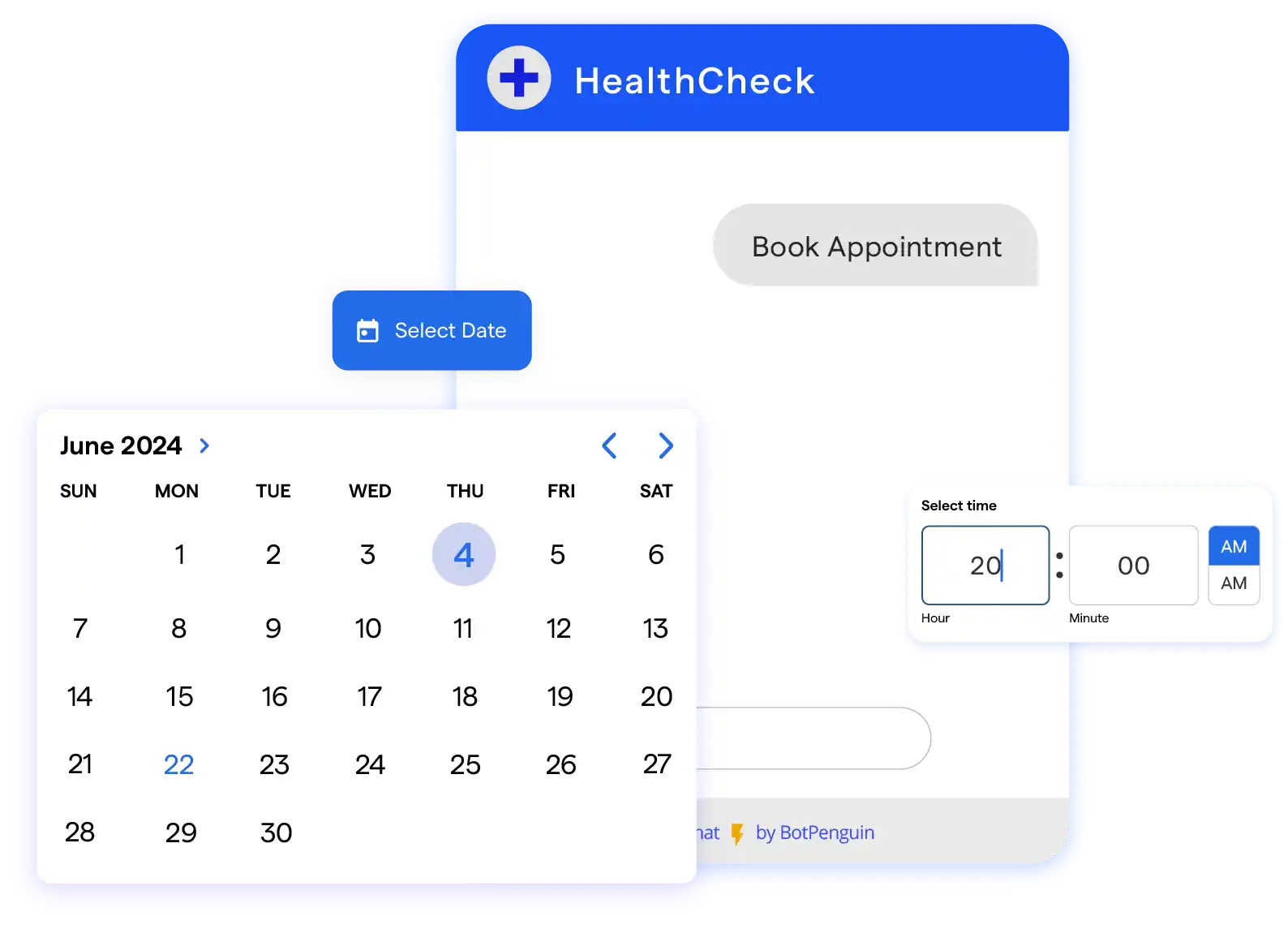
Chatbots streamline the appointment scheduling process, enabling patients to book appointments easily. It also reduces administrative burden on healthcare staff and minimizes no-show rates.
Health Education
Chatbots can deliver health education materials in a conversational format, helping patients understand their conditions, treatment options, and preventive measures. Thus empowering them to make informed decisions about their health.
Follow-up Care
Chatbots can facilitate post-care follow-ups, checking in on patients' progress. It would remind them of medication schedules or upcoming appointments, and provide support in managing chronic conditions.
Suggested Reading:
Launching Healthcare Chatbot in 8 Easy Steps with BotPenguin
Cost-Effective Solution
Implementing chatbots can reduce operational costs for healthcare providers by automating routine tasks. As it allows staff to focus on more complex patient needs, ultimately improving efficiency and reducing overheads. Healthcare practitioners also profit from chatbots since they improve productivity and streamline operations.
Enhancing Patient Satisfaction and Outcomes
Chatbot use for patient involvement can benefit healthcare systems as a whole. Healthcare organizations may boost their reputation and draw in new patients by enhancing patient happiness and results.
Chatbots play an important role in automating healthcare’s administrative tasks. And appointment scheduling is just a fraction of the whole automation process that healthcare chatbots can provide.
For example, opting for BotPenguin is a real gold rush of features. From automating the lead generation process to customer support automation, from answering patient queries to providing medication reminders, BotPenguin's Chatbots have too much to offer:
- Marketing Automation
- WhatsApp Automation
- Customer Support
- Lead Generation
- Facebook Automation
- Appointment Booking
Challenges and Considerations in Implementing Chatbots for Patient Engagement
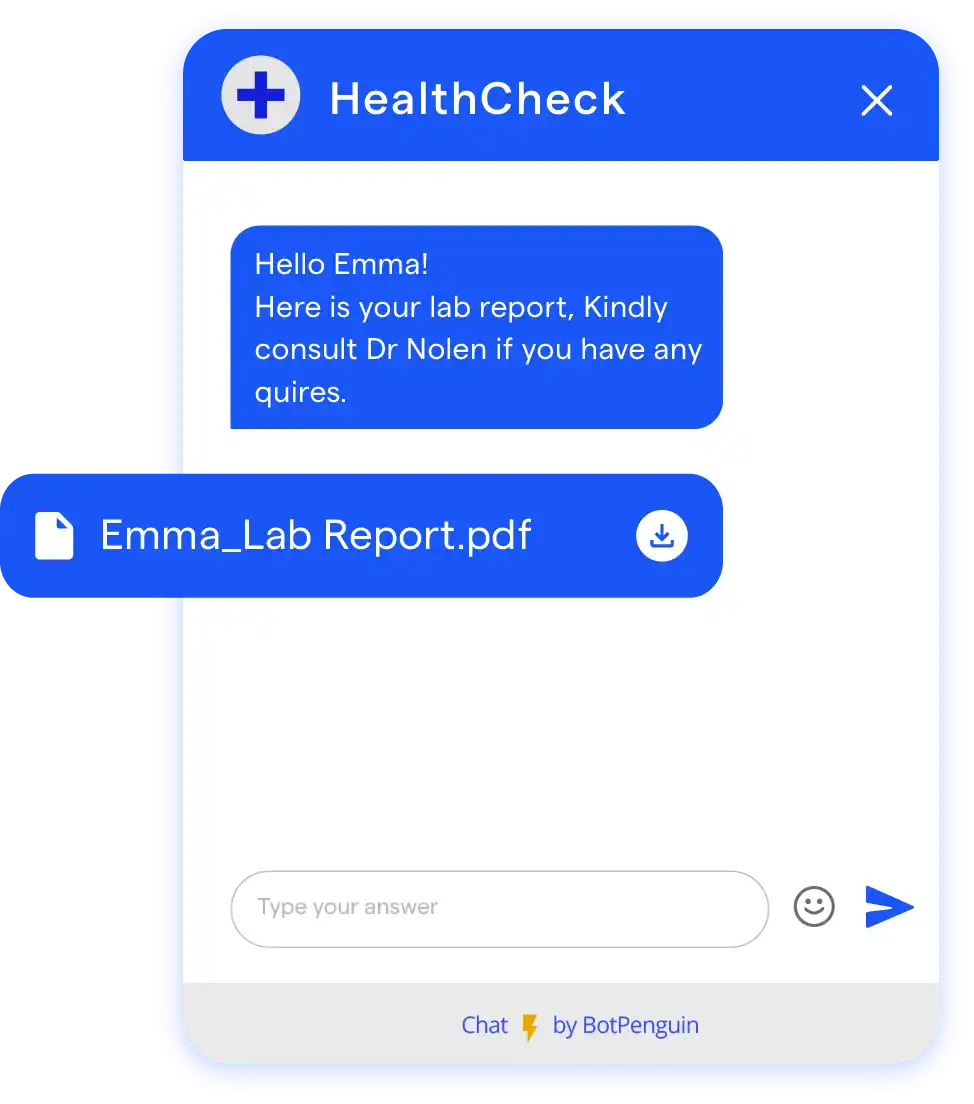
Even though chatbots have a lot of potential for improving patient engagement, there are obstacles to be solved, like:
Privacy and Security Concerns: Protecting Patient Information
Patient information security and privacy are two of the main issues in healthcare. To secure sensitive patient data, it is critical to make sure chatbots adhere to data protection laws and have strong security mechanisms in place.
Ensuring Chatbot Accuracy and Reliability: Building Trust
When giving advice and information about healthcare, chatbots must be precise and trustworthy. To keep chatbots informed on the most recent medical guidelines and expertise, regular updates and maintenance are required.
Overcoming Resistance to Technology Adoption: Educating and Assuring Patients
Some patients could be wary of interacting with chatbots because they are unsure of them or don't trust technology. Patients should be reassured that chatbots are designed to enhance rather than replace human contact in the healthcare context, informed about the benefits of chatbots, and given attention to any concerns they may have.
Addressing Language and Cultural Barriers: Ensuring Inclusivity
Consideration should be given to linguistic and cultural hurdles while designing chatbots to serve a variety of patient populations. To guarantee that chatbots can interact with patients from all backgrounds and offer inclusive healthcare support, multilingual skills, and cultural awareness are essential.
Best Practices for Implementing a Chatbot for Patient Engagement
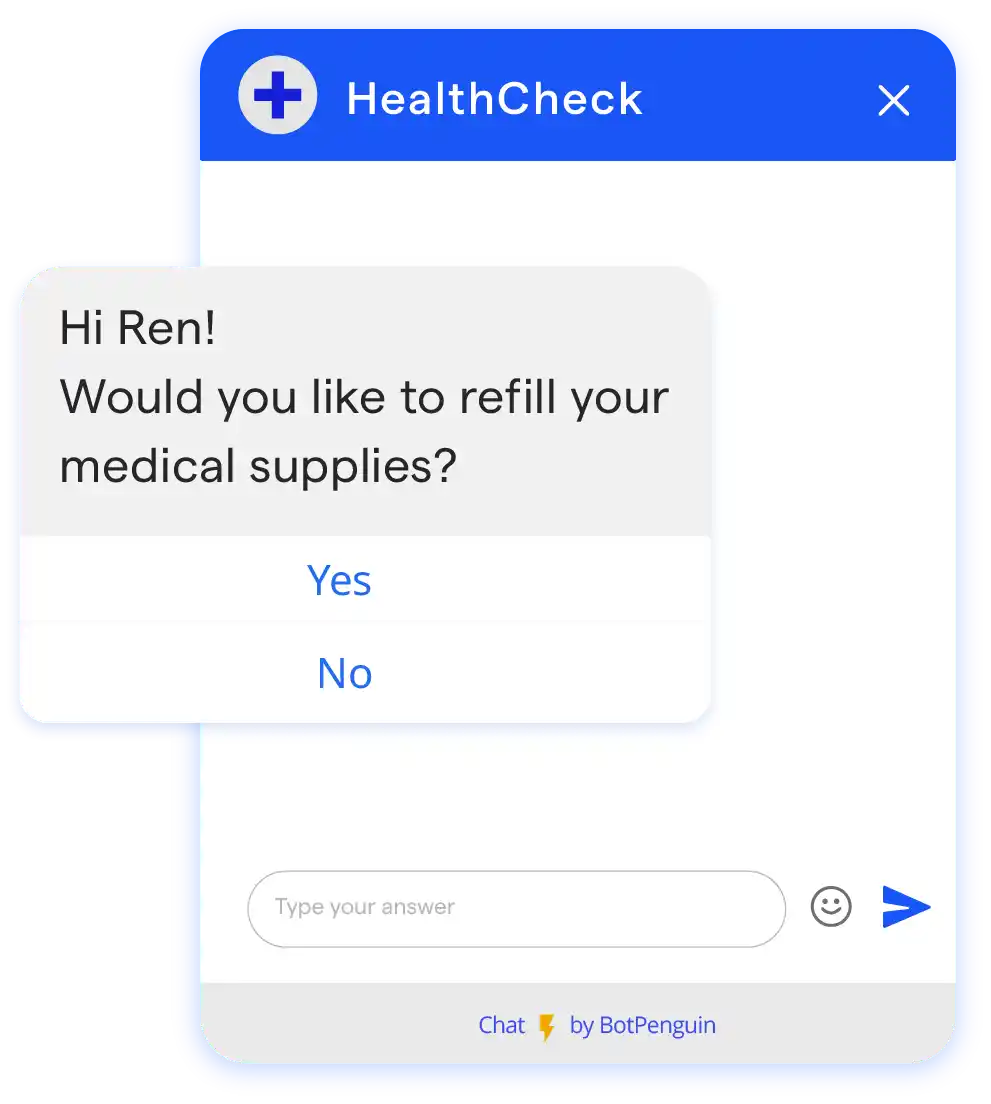
The best practices for implementing a chatbot for patient engagement are the following:
Needs Analysis and Goal Definition
Set specific goals and take the time to understand the particular requirements of your patient population. Defining these goals will assist your chatbot in providing relevant solutions.
Design for Usability
Create an interface that is as welcoming and easy to use as asking for directions. To make it easier for patients to participate, use simple language, clear cues, and pictures. What is the goal? A beautiful and smooth user experience that keeps patients engaged.
Integration with Existing Systems
Make sure that it has easy access to patient information and can interface with other systems. As a result, your chatbot becomes an important part of the healthcare symphony, facilitating data interchange and workflow management.
Conclusion
In conclusion, chatbots allow both doctors and patients to achieve better outcomes. As per Statistica, over 60% of healthcare institutions are adopting chatbots.
The advantages of chatbot-driven patient engagement cover a broad range. Patients gain control through chatbot-driven patient interaction.
Chatbots enable patients to take an active role in their healthcare journey by giving them rapid access to healthcare information, individualized advice, and reminders. The communication between healthcare professionals is improved, and treatment plans are followed more closely.
They do, however, have challenges, such as hesitation to technology adoption and worries about accuracy and privacy. And the solution is BotPenguin helathcre chatbots.
BotPenguin is a virtual healthcare assistant who is available around the clock. It is skilled at answering patient questions, setting up appointments, and giving specialized health advice. More than simply a chatbot, it puts the healthcare of the future at your fingertips.
A healthier population, lower cost of healthcare, and more effective healthcare systems ultimately benefit society.
Suggested Reading:
Enhance Patient Engagement with Custom Healthcare Chatbot

